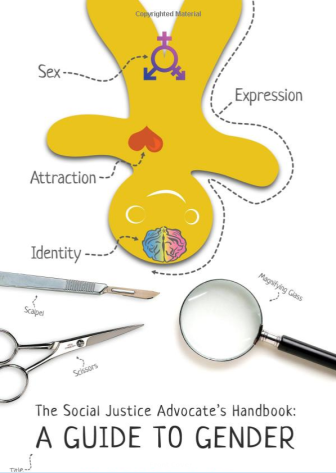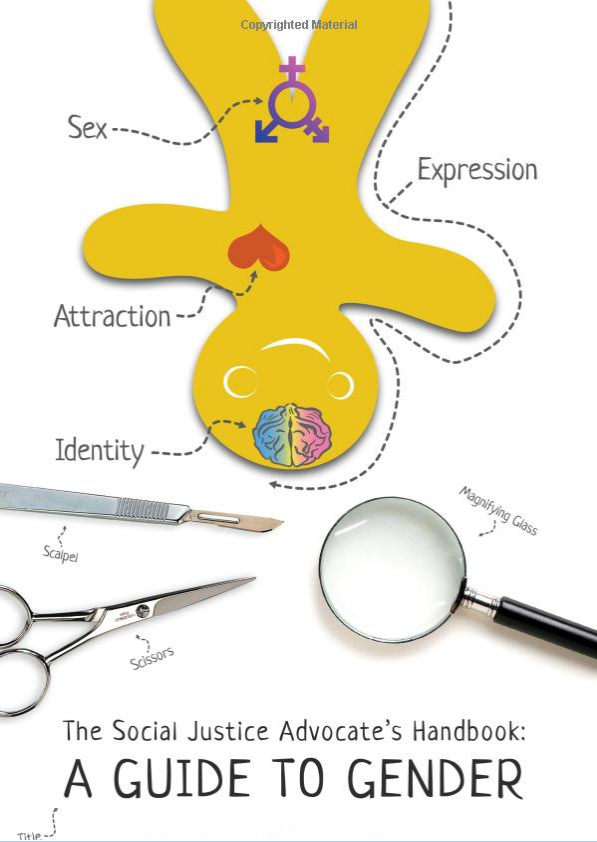 The Social Justice Advocate’s Handbook: A Guide to Gender
The Social Justice Advocate’s Handbook: A Guide to Gender
Sam Killermann
Impetus Books
239 pages
By Jami Jones
Sam Killermann’s “The Social Justice Advocate’s Handbook: A Guide to Gender” is a refreshing book written in a contemporary style by a metrosexual comedian who understands and truly gets that there are as many variations of gender expression as there are people — and he wants you to get that, too. After browsing several books on this topic (and even purchasing a few), I knew after reading one or two pages that Killermann’s was the one to review for this issue of Youth Today. I found most books on this topic to be a bit, well, academic, stiff and lecture-like. In contrast, “The Social Justice Advocate’s Handbook” is suggestive of a lively conversation about gender landscape in this decade. Killermann embraces a variety of media to convey the message that gender expression is personal, culturally determined, relative and changes over time. His use of media is fresh, modern, and would be, I think, highly effective with members of the Millennial generation born between 1982 and 2004, or older Homeland youth born after 2005.
The book is one tool to further the discussion about gender, but Killermann’s entrepreneurial approach includes social media, a vibrant website, itspronouncedmetrosexual.com, a TEDx talk — “Understanding the Complexities of Gender” — and a comedy show. In addition, Killermann provides multiple ways to own a copy of this material. As expected, purchasing the print copy of the book for full price is one way, but readers can receive an electronic copy at guidetogender.com/get by paying what they can afford or uploading comments about the book to Twitter or Facebook. In addition, numerous graphics, cartoons and lists are available to download for free if used for noncommercial purposes: Youth workers will find considerable information to promote forth-right discussions that gender is personal expression.
Although Killermann does not describe gender theory or discuss normative gender behavior in academic terms, this book is chock-full of useful information about social justice advocacy and why the concept of gender as binary — the strict expression of gender as either male or female — marginalizes many young people today. Along the way, readers are introduced to the contemporary gender movement and the cognitively complex notion of gender diversity. The final section of the book focuses on preparing readers for social justice interventions and education.
“The Social Justice Advocate’s Handbook” is organized into five sections: Basic Training; Breaking through the Binary; Feminism and Gender Equity; and Social Justice Competence: Working for Gender Equity, plus a useful appendix with a comprehensive glossary of gender terms such as gender variant, polyamory, and, of course, metrosexual. This is an especially useful glossary for youth workers unfamiliar with the complexity of gender and who are unsure of the correct words to use so as not to offend. The extensive use of graphics, comics and lists contribute to this enjoyable and instructive read, and add significant content for adults who thought gender is about just boys and girls, males and females.
These resources are outstanding works for youth on the topic of gender. Adults wanting a keener insight about youth and gender will find these books helpful conversation starters or great reads to explore.
The Accepting Dad website — http://acceptingdad.com/supportive-bookmedia-for-gender-variant-non-conforming-kids — identifies resources such as books, media and poetry for supporting gender-variant and non-conforming children as well as their parents.
The Ocean County, N.J., Library posts annotated lists of books on topics of interest to teens. A list of fiction and nonfiction books for teens about gender, “Insight Out: Books about Gender Identity for Teens,” is available at http://theoceancountylibrary.org/Teens/reads.htm.
“The Disreputable History of Frankie Landau-Banks” (Disney-Hyperion, 2009) by Emily Lockhart is an entertaining and thought-provoking story about the male privilege of Alabaster Prep’s Loyal Order of the Basset Hounds.
Set in a working class Omaha neighborhood in 1986, “Eleanor & Park” (St. Martin’s Griffin, 2013) by Rainbow Powell tells the story of two teens whose gender expressions reside outside their families’ expectations and understandings.
“Gender Stories: Negotiating Identify in a Binary World” (Waveland Press, 2012) by Sonja K. Foss, Mary E. Domenico, and Karen A. Foss is an affirming book to move youth beyond traditional gender binary and craft their own gender stories.

























